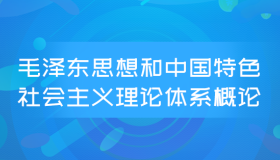英语写作学习笔记 Follow the MLA Style of In-text Cita
《自考视频课程》名师讲解,轻松易懂,助您轻松上岸!低至199元/科!
Sources of information, whether by direct quotation or paraphrase, should be acknowledged, both to credit those sources and to permit an evaluation of the statement made. The sources are acknowledged in the list of Works Cited that shows all the sources contributing information to the paper. For publication and research paper as well, use parenthetical text references to acknowledge direct and indirect quotations and citations.
A. The MLA style
The MLA’s (Modern Language Association) in-text citations are made with a combination of signal phrases and parenthetical references. A signal phrase indicates that something taken from a source such as a quotation, summary, or paraphrase is about to be used; usually the signal phrase includes the author’s name. The parenthetical reference indicates at least a page number. Citations in parentheses should be as concise as possible but complete enough so that readers can find the source in the list of works cited at the end of the paper, where works are listed alphabetically under the author’s last name. The following models illustrate the form for the MLA style of citation.
1. Author in signal phrase, page number in parentheses
If you have mentioned the author’s name in your text, the note usually consists of only the page number (s) on which the information is located.
This fact led the critic Owen Thomas to conclude that Emily Dickinson “was well aware of the world outside her little room, that in fact she used the language of this outside world to create some of her best poetry” (523).
2. Author and page number in parentheses
If you have not mentioned the author’s name, the note must include that information.
But an economist who dicted the dession of 1981 a year in advance fears the price of gold will decline slowly for at least ten years (Goodserve 143).
3. When to include a
If the author has written more than one of the sources in your Works Cited, your note must include a shortened form of the particular unless it is mentioned in your text.
Chomsky claims that all humans inherit the same basic linguistic structural framework upon which their community’s particular language is fitted (Language 29-41).
The Works Cited in this case also includes Chomsky’s Syntactic Structures.
4. Unknown author
If the author is unknown, as in many newspaper accounts, the must appear in the store, if not mentioned in the text. The s may be shortened.
Only Mayor McCarthy exssed the least optimism toward the city’s fate (“Rebirth” 2).
The Works Cited for this source shows: “Rebirth of a City.” News-Times [Danbury, CT] 6 Sept. 1977: 2.
5. A work with two or more authors
If your source has two or three authors, name them in the signal phrase or include them in the parenthetical reference.
Patterson and Linden agree that the gorilla Koko acquired language more slowly than a normal speaking child (83-90).
6. A multi-volume work
If your paper cites more than one volume of a multi-volume work, you must indicate in the parentheses which volume you are referring to.
Terman’s studies of gifted children reveal a pattern of accelerated language acquisition (2: 279).
If your paper cites only one volume of a multi-volume work, the volume number will be mentioned in the list of works cited at the end of the paper. You will not need to include it in the parentheses.
7. A novel, a play, or a poem
In citing literary sources, include information that will enable readers to find the passage in various editions of the work. For a novel, put the page number first and then indicate the part or chapter in which the passage can be found.
Fitzgerald’s narrator captures Gatsby in a moment of isolation: “A sudden emptiness seemed to flow now from the windows and the great doors, endowing with complete isolation the figure of the host” (56; ch. 3).
For a verse play, list the act, scene, and line numbers. Use Arabic numbers.
In his famous advice to the players, Hamlet defined the purpose of theater, “whose end, both at the first and now, was and is, to hold, as ’twere, the mirror up to nature” (3. 2. 21-23).
For a poem, cite the part (if there are a number of parts) and the line numbers.
When Homer’s Odysseus came to the hall of Circe, he found his men “mild / in her soft spell, fed on her drug of evil” (10. 209-11).
8. Indirect source
When a writer’s or speaker’s quoted words appear in a source written by someone else, begin with the citation with the abbreviation “qtd. In.”
“We only used seven signs in his sence,” says Fouts. “All of his signs were learned from the other chimps at the laboratory” (qtd. In Toner 24).
9. Parenthetical citation of two or more works
You may want to cite more than one source to document a particular point. Separate the citations with a semicolon.
With intensive training, the apes in this study learned more than 200 signs or signals (Desmond 229; Linen 173).
B. Endnotes and footnotes
Once in a while, you will find something that might interest your readers but is not essential to whatever idea you are developing in the paper at that point. If that happens, you may insert a note number directing readers to a footnote or an endnote. Endnotes are placed on a separate page, coming between the end of the paper and the Works Cited page. Footnotes are put at the bottom of the page on which you insert your note number.
Insert the note number immediately after the final mark of punctuation for the sentence that led you to think of adding the “comment for interested readers.” Raise the number half a line.
Literacy critics, serious biographers, and writers of fictionalized accounts of her life created an image of Emily Dickson as a timid, reclusive, mystical thinker, who was too absorbed in personal sorrows and ecstasies to be concerned with literacy recognition. And this image persists, to a great extent, in the public mind today.1
The endnote page would show:
1. For a full discussion of sources leading to the “Emily Myth,” see Ferlazzo: 13-21.
This note offers readers more information than they could get from the simple parenthetical note: “Ferlazzo 13-21.”
C. Spacing and punctuation
1. Leave one space before the opening parenthesis. If a punctuation mark follows the citation, place it outside the closing parenthesis, and leave one space after a comma, semicolon, or colon, and two spaces after a period, question mark, or exclamation point.
Morgan believes the whale stands for God (132), whereas Kay claims it “embodies all that is evil” (19-20). This controversy derives largely from…
2. The parenthesis is placed inside a sentence, directly follow the quotation or paraphrase they refer to, and outside quotation marks. (See the vious example)
3. When a quotation ends with a ? or a !, the ? or ! goes inside the quotation marks. Note: A period is still needed after the parenthesis.
Dickinson’s letter to Higginson contained a question: “Are you too deeply occupied to say if my Verse is alive?” (Letters 2: 403).
4. If you quote more than four lines from a source, set the question off from the rest of the text by indenting ten spaces (if the paper is processed by computer, indent about 0.4-0.5 inches) from the margins. Then place the parenthetical note after the final mark of punctuation, separated by two spaces.
Cotton also suggests that Davis’s attempt to lead his people to independence was somehow doomed to failure from the start:
He had done the best he could in an important job, and if it is easy to show where he made grievous mistakes, it is difficult to show that any other man, given the materials available, could have done much better. He had courage, integrity, tenacity, devotion to his cause, and like Old Testament Sisera, the stars in their courses marched against him. (279)
D. Preparing a list of works cited
A list of works cited, which appears at the end of your paper, gives full publishing information for each of the sources you have cited in the paper. Start on a new page and your list “Works Cited.” Then, working from your bibliography cards, list in alphabetical order all the sources that you have cited in the paper. Sources not actually cited in the paper should not be given in this list, even if you may have read them. Alphabetize the list by the last name of the author or editor; if there is no author or editor, alphabetize the first word of the other than a, an, or the.
Do not indent the first line of each bibliographical entry, but indent five spaces for any additional lines. This technique highlights the names by which the list has been alphabetized.
The following models illustrate the MLA form for bibliographic entries.
1. Basic format for a book
For most books, arrange the information into three units, each followed by a period: (1) the author’s name, last name first; (2) the and sub, italicized or underlined if typed manually; and (3) the place of publication, the publisher, and the date.
Atwood, Margaret. Survival: A Thematic Guide to Canadian Literature. Toronto: Anansi, 1972.
Davis, Flora. Eloquent Animals: A Study in Animal Communication. New York: Coward, 1978.
2. Two or more authors
Name the authors in the order in which they are sented on the page: reverse the name of only the first author.
Fisher, Roger, and William Ury. Getting to Yes: Negotiating Agreement Without Giving In. Boston: Houghton, 1981.
For four or more authors, cite only the first one, followed by “et al.”, the Latin abbreviation for “and others.”
3. Editors
An entry for an editor is similar to that for an author except that the name is followed by a comma and the abbreviation “ed.” for “editor.” If there is more than one editor, use the abbreviation “eds.” for editors.
Lenneberg, Eric H. and Elizabeth Lenneberg, eds. Foundation of Language Development. New York: Academic, 1975.
4. Author with an editor
Begin with the author and , followed by the name of the editor. In this case the abbreviation “Ed.” Means “edited by,” so it is the same for one or multiple editors.
Shakespeare, William. The Tragedy of Macbeth. Ed. Louis B. Wright and Virginia A. Lamar. New York: Washington Square, 1959.
5. Translation
List the entry under the name of the author, not the translator. After the , write “Trans.” for “translated by” and the name of the translator.
Tolstoy, Leo. Anna Karenina. Trans. Constance Garenett. Indiannapolis: Bobbs, 1978.
6. Unknown author
Begin with the . Alphabetize the entry by the first word of the other than a, an or the.
Times Atlas of the World, The. 5th ed. New York: New York Times, 1975.
7. Edition other than the first
If you are citing an edition other than the first, include the number of the edition after the :
2nd ed., 3rd ed., and so on.
Spatt, Brenda. Writing from Sources. 2nd ed. New York: St. Martin’s, 1987.
8. Multi-volume work
Include the number of volumes before the city and publisher, using the abbreviation “vols.” If your paper cites only one of the volumes, write the volume number after the date, using the abbreviation “Vol.”
Graves, Robert. The Greek Myths. 2 vols. New York: Braziller, 1967, Vol. 2.
9. Work in anthology
Present the information in this order, with each item followed by a period: author of the work; of the work, in quotation marks; of the anthology, in italics; editor of the anthology, ceded by “Ed.”; city, publisher, and date; page numbers on which the work appears.
Abrams, M. H. “English Romanticism: The Spirit of the Age.” Romanticism Reconsidered. Ed. Northrop Frye. New York: Columbia UP, 1963. 63-88.
10. Encyclopedia or dictionary
Articles in well-known dictionaries and encyclopedia are handled in abbreviated form. Simply list the author of the article, the of the article, the of the reference book, and the date of the edition.
Frankel, Mark S. “Human Experimentation: Social and Professional Control.” Encyclopedia of Bioethics. 1978 ed.
11. Article in a monthly magazine
In addition to the author, the of the article, and the of the magazine, list the month and year and the page numbers on which the article may be found. Abbreviate the names of months except for May, June, and July.
Lorenz, Wanda L. “Problem Area in Accounting for Income Taxes.” The Practical Accountant. Feb. 1984: 69-77.
12. Article in a weekly magazine
Handle articles in weekly magazines as you do those for monthly magazines, but give the exact date of the issue, not just the month and year.
Clark, Matt. “Medicine: A Brave New World.” Newsweek. 5 Mar. 1984: 64-70.
13. Article in a daily newspaper
Begin with the author, if there is one, followed by the of the article. Next list the name of the newspaper, the date, the section letter or number, and the page number.
Gorney, Cynthia. “When the Gorilla Speaks.” Washington Post. 31 Jan. 1998: B1.
If the section is marked with a number rather than a letter, handle the entry as follows:
“Market Leaks: Illegal Insider Trading Seems to Be on Rise; Ethical Issues Mudled.” Wall Street Journal. 2 Mar. 1997, sec. 1: 1.
14. Interview
Begin with the name of the person interviewed. Next write “Personal interview.” End with the date of the interview.
Shaw, Lloyd. Personal interview. 21 Mar. 1987.
15. Two or more works by the same author
If your list of works cited includes two or more works by the same author, use the author’s name only for the first entry. For subsequent entries use three hyphens followed by a period. List
Davis, Flora. Eloquent Animals: A Study in Animal Communication. New York: Coward, 1978.
---. Inside Intuition: What We Know About Nonverbal Communication. New York: McGraw, 1973.
以上就是关于《英语写作学习笔记 Follow the MLA Style of In-text Cita》的全部内容,想了解更多湖南自考资讯,请持续关注《湖南自考网》。如有需要,考生可点击《湖南自考网助学报名入口》进行报名,或点击添加《招生老师微信》进行咨询解答和报名服务哦~
本文标签:湖南自考 湖南自考文学类 英语写作学习笔记 Follow the MLA Style of In-text Cita
转载请注明:文章转载自(http://www.hnzk.hn.cn)
《湖南自考网》免责声明
1、由于各方面情况的调整与变化,本网提供的考试信息仅供参考,考试信息以省考试院及院校官方发布的信息为准。
2、本网信息来源为其他媒体的稿件转载,免费转载出于非商业性学习目的,版权归原作者所有,如有内容与版权问题等请与本站联系。联系邮箱:812379481@qq.com



 ×
×































